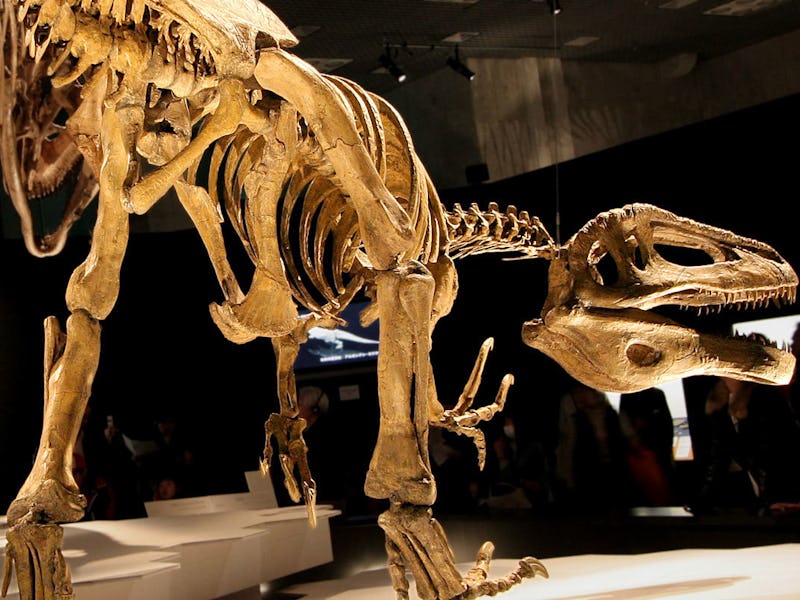"Giant Thief" Dinosaur Discovery Deepens Megaraptor Mystery
It's one more piece of a planet-wide jigsaw puzzle.

Scientists have dug up a new species of dinosaur in Argentina that holds clues to the mysterious megaraptors, a carnivorous group of animals that defies easy categorization. The species was named Murusraptor barrosaensis, and is described for the first time in an article published Wednesday in PLOS ONE.
Murus is Latin for “wall” and signifies the canyon wall where the fossils were found. Barrosaensis evokes Sierra Barrosa, the Patagonian region where the dig site is located. Murusraptor barrosaensis is definitely within the megaraptor clade, the authors conclude. How megaraptors fit into the overall picture of dinosaur evolution, though, is still the subject of paleontological debate.
Megaraptors are within the larger group of carnivorous theropods, and are characterized by hands with two very large claws on each forelimb. “Megaraptor” means “giant thief.” As the name suggests, they were much bigger than the raptors, which — contrary to what Jurassic Park would have you believe — were mostly about the size of a turkey. But they were not nearly so big at the Tyrannosaurus rex and other giant theropods. Murusraptor may have been about 13 feet from teeth to tail.
'Murusraptor barrosaensis' lived 80 million years ago in what is now Argentina. The scale bars represent 10 centimeters (top) and one meter (bottom).
Megaraptors belong to the group of dinosaurs most closely related to living birds, and shared many of their characteristics, including light, hollow bones. But here’s the bone of contention: While some scientific papers place the megaraptors as a subgroup of the allosaurids, others argue that they more rightly belong with the coelurosaurs, which would make them closer cousins to the T. rex.
Solving this puzzle is no easy task, and the problem, as always in paleontology, is limited information. How do you understand an animal that was once a living, breathing thing, from a handful of old bones? How do you describe the world as it was 80 million years ago when your only evidence is the rocks that formed at that time and place in Earth’s history?
The field of paleontology has developed sophisticated tools for filling in the gaps in our knowledge, but it’s still limited by the source material. And even when you have spectacular bones to look at, looks can be deceiving. For example, the newly discovered Gualicho shinyae had tiny arms like a T. rex, but this does not indicate a close genetic relationship. Instead, this is a matter of convergent evolution, the process by which animals develop similar traits separately as they evolve to fill similar ecological and behavioral niches.
What this means for paleontologists is they can’t come to conclusions about who’s related to who by only looking at the big picture. Instead, they drill down on the smallest anatomical to separate superficial resemblance from true genetic provenance. The family tree that results is not a definitive solution but a best-guess, up for debate, reinterpretation, and obliteration by future scientific study.
The authors of the new paper don’t take a position on the matter of whether Murusraptor is closer kin to the Allosaurus or the T. rex. Instead, they conduct two separate analyses on the bones, one for each hypothesis. The fossils that will solve this mystery are out there somewhere, they conclude; they just haven’t been found yet. “Eventually, further discoveries of more eloquent specimens in older rocks from both South America and Australia will help lead to a better understanding of the early evolution of the clade and, therefore, clarify its basal phylogenetic affinities.”
The truth, as they say, is out there.